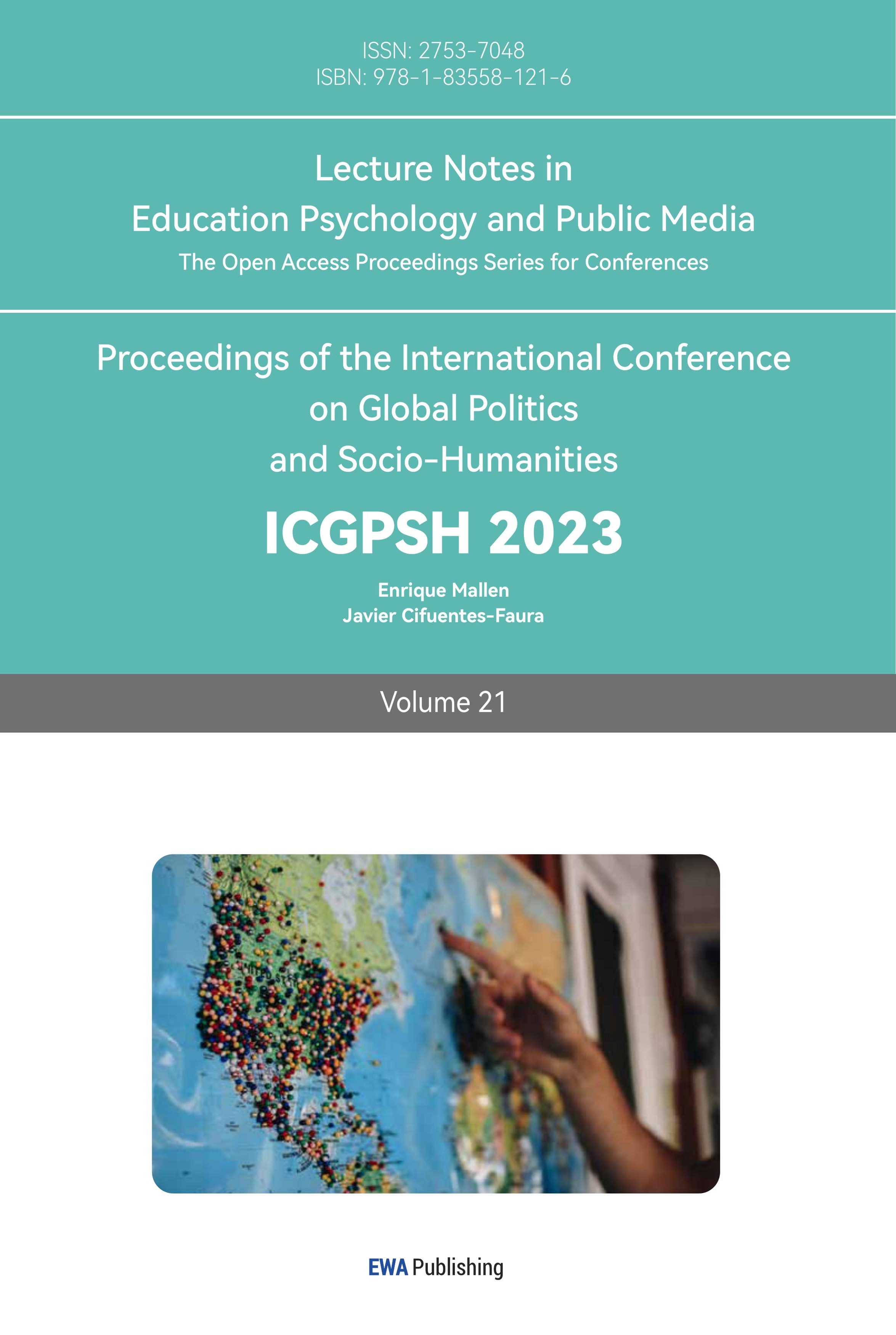References
[1]. Yi Zixuan. (2021) Short video era game short video status and development measures [J]. Journalism Research Guide, 2021[12(13)]:114-116.
[2]. Zhang Puxin. (2022) The problem of homogenization of ShakeYin tourism short video content and coping strategies [J]. Tourism and photography, (02):29-31.
[3]. Lu Yingzhan. (2022) Research on the copyright of short videos of e-sports games [J]. Social Science, (12).
[4]. Pan Caiyun & Xu Mengsheng. (2019) Overview of the development of China’s mobile short video industry in 2018[J]. News Lovers, (06):31-35.
[5]. He Yunxi & Yuan Dan & Ren Yuhang & Tian Ziyue. (2022) The current situation, problems, and countermeasures of short video cultural and creative proliferation - taking Jieyin platform as an example [J]. Communication and Copyright (05):61-63.
[6]. Wu Yuanqing & Zhang Xiaoyan. (2022) An exploration of the regulation of mobile short video content production [J]. Continental Bridge Vision. (11):113-115.
[7]. Yang Benwang. (2021) Analysis of the status situation of original short video communication in the new media era [J]. China Media Technology, (09): 53-55.
[8]. Sun Wei. (2022) Planning + originality: a method for creating explosive short videos for Shandong Radio and Television [J]. All Media Exploration, (08):49-50.
[9]. Wang Qian & Zhang Hao, (2021) Research on the content production model of net popularity short videos* [J]. Journal of Jiujiang College (Social Science Edition), (3):124-128.
[10]. Tu Xiaofei & Zhou Yu. (2022) Exploring the protection of short video infringement in the era of self-media [J]. Foreign Economic and Trade, (09):69-72.
Cite this article
Chen,X. (2023). A Comparative Study of Content Originality and Plagiarism in Teaching Game Short Video: Based on Users’ Usage in Douyin and Kuaishou. Lecture Notes in Education Psychology and Public Media,21,25-34.
Data availability
The datasets used and/or analyzed during the current study will be available from the authors upon reasonable request.
Disclaimer/Publisher's Note
The statements, opinions and data contained in all publications are solely those of the individual author(s) and contributor(s) and not of EWA Publishing and/or the editor(s). EWA Publishing and/or the editor(s) disclaim responsibility for any injury to people or property resulting from any ideas, methods, instructions or products referred to in the content.
About volume
Volume title: Proceedings of the International Conference on Global Politics and Socio-Humanities
© 2024 by the author(s). Licensee EWA Publishing, Oxford, UK. This article is an open access article distributed under the terms and
conditions of the Creative Commons Attribution (CC BY) license. Authors who
publish this series agree to the following terms:
1. Authors retain copyright and grant the series right of first publication with the work simultaneously licensed under a Creative Commons
Attribution License that allows others to share the work with an acknowledgment of the work's authorship and initial publication in this
series.
2. Authors are able to enter into separate, additional contractual arrangements for the non-exclusive distribution of the series's published
version of the work (e.g., post it to an institutional repository or publish it in a book), with an acknowledgment of its initial
publication in this series.
3. Authors are permitted and encouraged to post their work online (e.g., in institutional repositories or on their website) prior to and
during the submission process, as it can lead to productive exchanges, as well as earlier and greater citation of published work (See
Open access policy for details).
References
[1]. Yi Zixuan. (2021) Short video era game short video status and development measures [J]. Journalism Research Guide, 2021[12(13)]:114-116.
[2]. Zhang Puxin. (2022) The problem of homogenization of ShakeYin tourism short video content and coping strategies [J]. Tourism and photography, (02):29-31.
[3]. Lu Yingzhan. (2022) Research on the copyright of short videos of e-sports games [J]. Social Science, (12).
[4]. Pan Caiyun & Xu Mengsheng. (2019) Overview of the development of China’s mobile short video industry in 2018[J]. News Lovers, (06):31-35.
[5]. He Yunxi & Yuan Dan & Ren Yuhang & Tian Ziyue. (2022) The current situation, problems, and countermeasures of short video cultural and creative proliferation - taking Jieyin platform as an example [J]. Communication and Copyright (05):61-63.
[6]. Wu Yuanqing & Zhang Xiaoyan. (2022) An exploration of the regulation of mobile short video content production [J]. Continental Bridge Vision. (11):113-115.
[7]. Yang Benwang. (2021) Analysis of the status situation of original short video communication in the new media era [J]. China Media Technology, (09): 53-55.
[8]. Sun Wei. (2022) Planning + originality: a method for creating explosive short videos for Shandong Radio and Television [J]. All Media Exploration, (08):49-50.
[9]. Wang Qian & Zhang Hao, (2021) Research on the content production model of net popularity short videos* [J]. Journal of Jiujiang College (Social Science Edition), (3):124-128.
[10]. Tu Xiaofei & Zhou Yu. (2022) Exploring the protection of short video infringement in the era of self-media [J]. Foreign Economic and Trade, (09):69-72.









